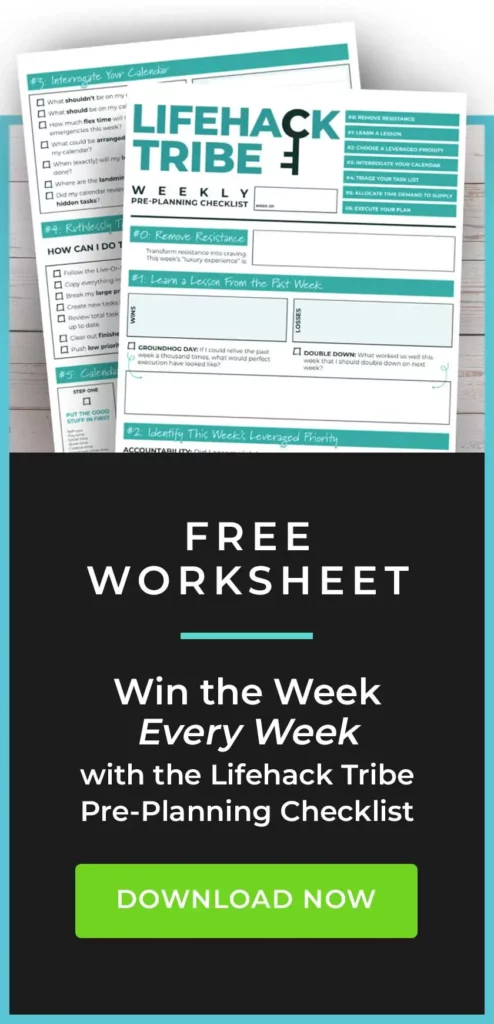
There’s a lot of buzz around free online task managers such as Asana, Monday, ClickUp, and ToDoist right now. The work-from-home boom brought on by the pandemic has forced many companies to reimagine how to get things done!
Online task managers are essentially high-tech, 21st century to-do lists. They help you organize, manage, and execute on tasks.
With a lot of buzz, comes dozens of options. There are so many online tools that claim to “manage your workspace,” “help get things done,” and “execute projects” for you.
How on earth are you supposed to choose which one is right for you?!
At Lifehack Method, my team uses and loves Asana. (So much so that we launched a full course that teaches you how to use Asana to its fullest potential!)
But I want to help you choose the task manager that’s the right fit for YOU.
Let’s first discuss the biggest issues with task managers and how to avoid them.
The best free online task managers:
- Asana: Manage tasks with visual boards.
- ClickUp: All-in-one: tasks, chat, docs & boards.
- Monday.com: See project status & track tasks.
- Trello: Organize tasks with boards & cards.
- Todoist: Prioritize your digital to-do list.
- Planner: Streamline teamwork in Microsoft 365.
What exactly is a task manager?
Online task managers are designed to do one thing, and one thing alone: organize and execute your work so that you can get more done in less time—with more clarity, fewer distractions, and fewer meetings.
They’re so great because our brains are not designed to store copious amounts of information… but task managers are!
I know I’m not the only one that struggles to remember every single tiny little thing I need to get done in a day…
But online task managers don’t struggle with that—they’re designed for it!
Using one means you’ll expend a lot less energy trying to remember what you need to do. You’ll always have an answer when you’re wondering, “What the heck should I be doing right now?” after you get distracted by an Instagram story or the latest salacious news headline.
But what task manager should you use? Let’s find out.
My favorite online task managers right now
Here are 6 amazing platforms that will be fantastic for most users.
This list is not exhaustive, because I won’t pretend to have evaluated every task manager on the market (and don’t believe anyone who says they have!) But they are the best ones I’ve come across – starting with my favorite, Asana.
1. Asana
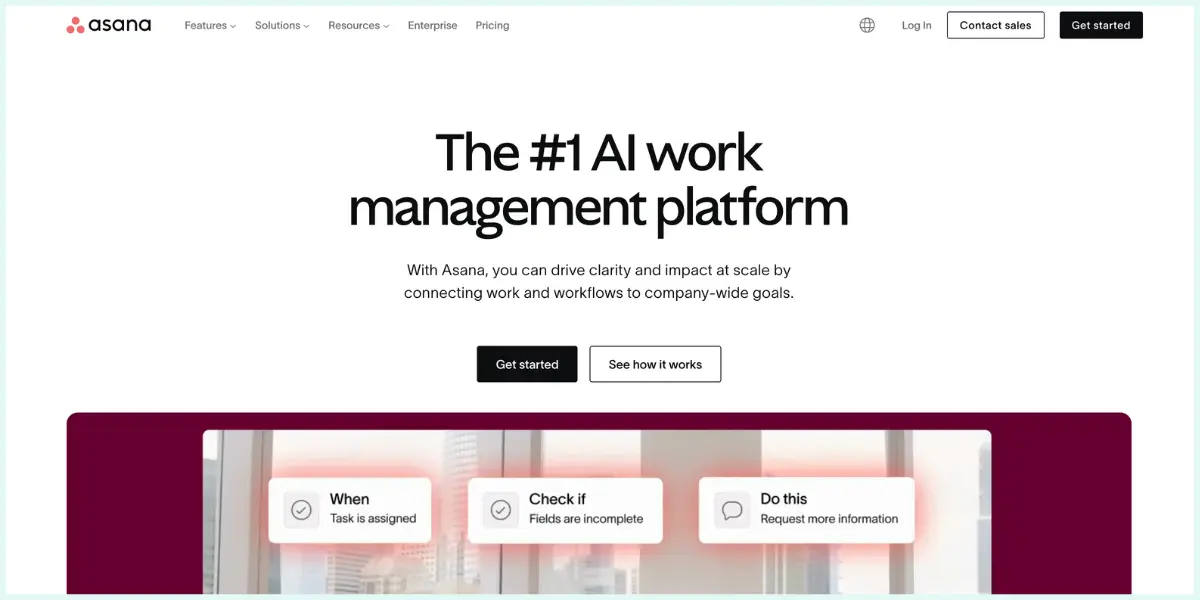
All task management platforms do the things our brains don’t do naturally—like store tons of detailed information without losing anything.
But Asana is known for having the most “natural” user interface of the lot. Users report a 45% increase in team efficiency with Asana—and I have to say I would agree with that figure when it comes to my own productivity and my team’s productivity.
The Asana team is constantly making improvements and updates to the interface to test and see what works best for their users. I like that their interface works equally well if you’re an individual worker or if you’re working with a team.
They’re incredibly focused on the pain points of their users, in particular the pain points of prioritization and clarity—meaning they’re very focused on helping you get clarity around your work so you can take action fast.
Asana also has a very good free-for-life version, which not many platforms have.
2. ClickUp
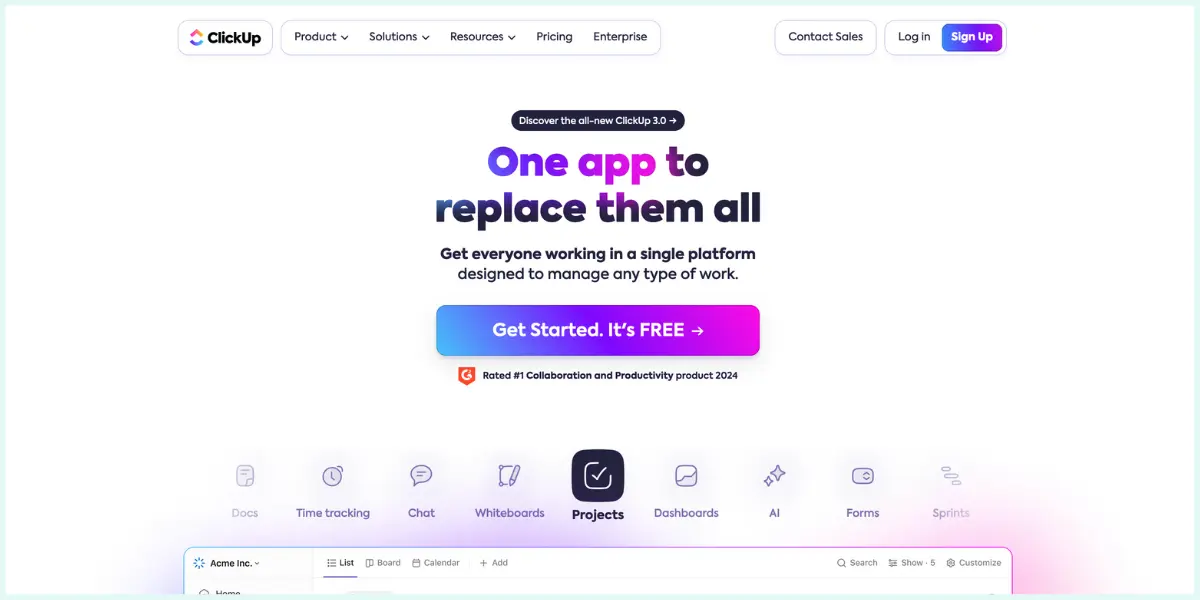
ClickUp is a cloud-based project management platform offering a comprehensive suite of features to streamline teamwork.
Plus, you can chat, collaborate, and edit in real-time with your teammates directly within each project, which drives communication and keeps everyone up to date.
Like most task managers, ClickUp also has Kanban boards that make it easy to see where each project is in the pipeline and track tasks through the various stages.
It’s also worth noting that ClickUp has native time tracking and a 2-way sync with Google Calendar that I love. You can see all the features here.
I personally find it more confusing to understand and use than simpler platforms like Asana, but if you’re willing to learn about its features, then ClickUp could be the right fit for you.
ClickUp is free to use for personal use, but for teams, it costs $7 to $12 per person per month.
3. monday.com
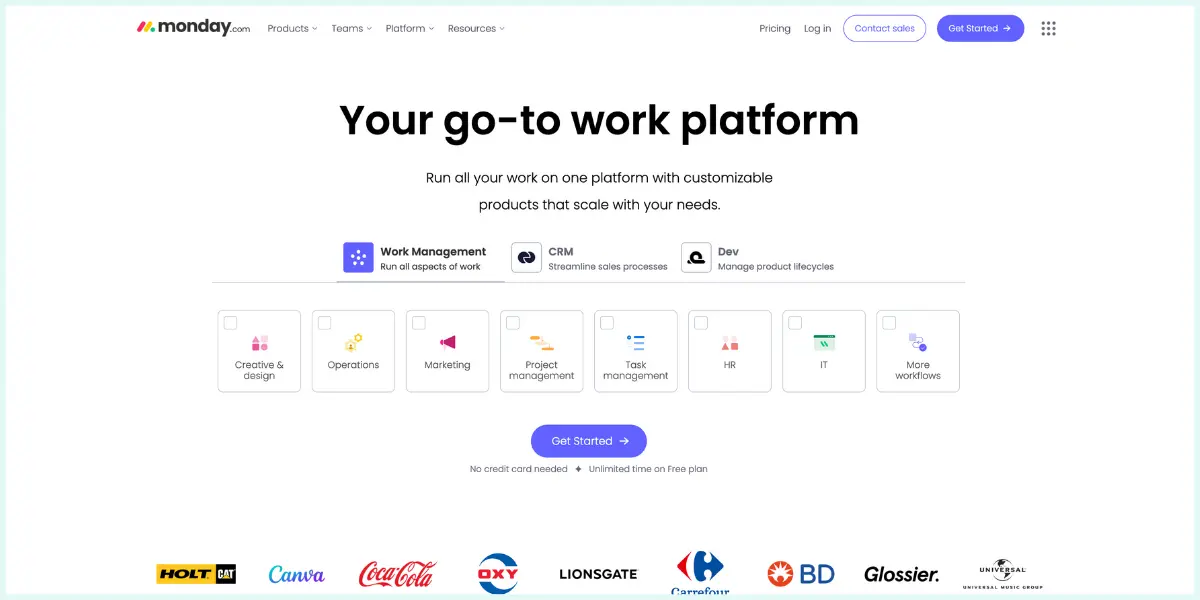
monday.com is a visual project management tool designed to streamline a team’s collaboration, organization, and task tracking, which makes it a good option for any team.
Each user can create customizable Gantt charts and Kanban boards to keep track of a project’s progress.
They can be used to assign tasks, set and track deadlines, and keep up-to-date with project progress. Better yet, they can also be tailored to specific workflows.
It also has hundreds of features, such as pre-made templates, email sync and tracking, project automation, and integrations for tools like Microsoft Teams and Google Drive.
There is a free-for-life option for individuals, but prices for teams range from $8 to $19 per seat per month. There’s also a 14-day free trial available.
4. Trello
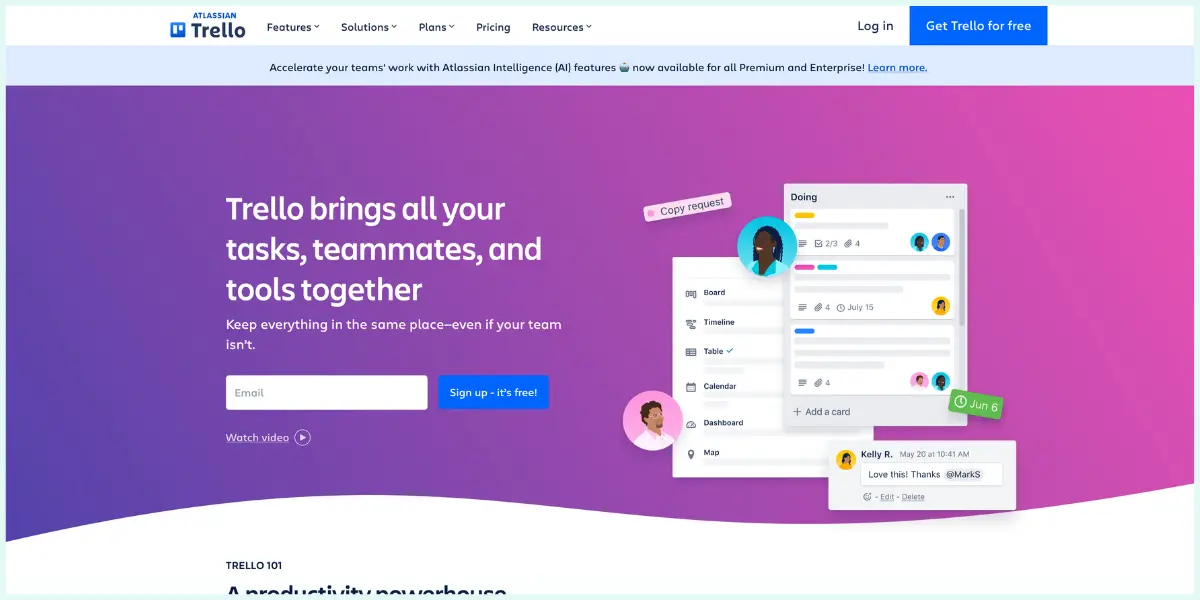
Trello is famous because it was the first to offer Kanban-like boards, a feature that most other programs have now, too.
Still, it’s worth a look! Its straightforward visual interface uses boards, lists, and cards to help teams keep track of their to-do lists.
Within a board, projects can be broken down into more granular tasks (called cards) and sorted by stage. Each card can be customized to include things like dates, details, attachments, and comments.
Trello has plenty of features, including customizable board views, pre-made templates, and whiteboards. There are also hundreds of integrations, including plugins for Teams, Salesforce, and Google Sheets.
A free version is available, but the paid plans, which start at $5 per month, offer more features.
5. Todoist
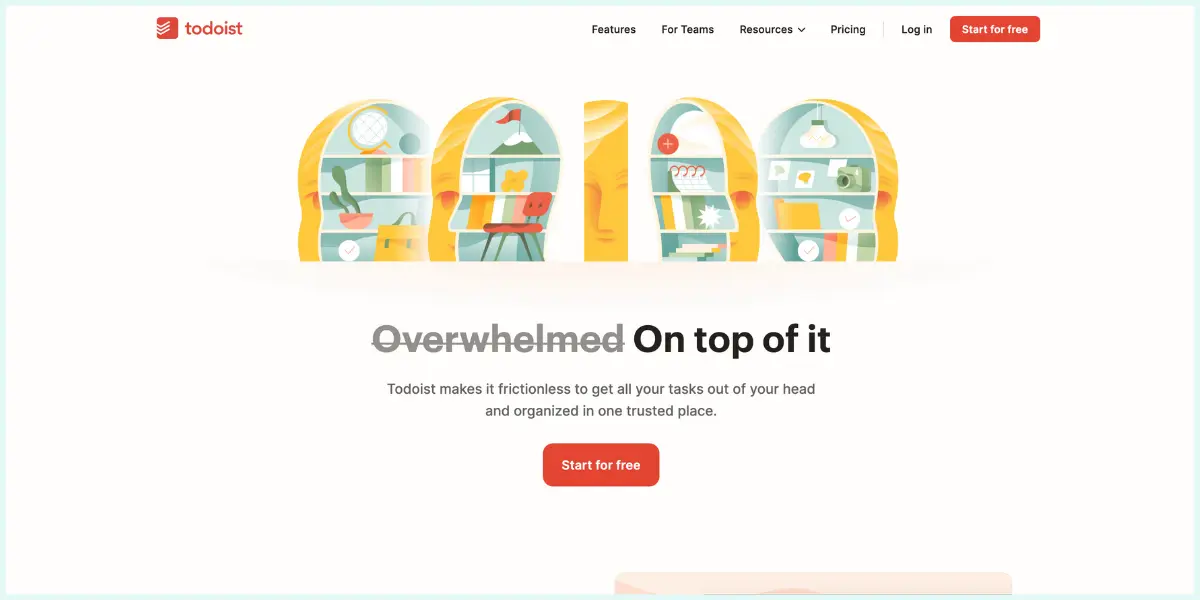
If you’re looking for an online task manager that looks more like a to-do list, Todoist might be for you.
And it can be used for more than just work – you can set reminders, deadlines, and labels for anything, from errands you need to run to work emails you need to send.
Plus, the ability to add recurring dates makes it easy to build and sustain good time saving habits.
I also like that Todoist can be synced across several devices, including your phone and smartwatch.
Todoist is a super solid program, and also has a cool goals feature that allows you to set daily or weekly personal goals for yourself. This isn’t something I’ve seen other platforms do, so if that’s important for you, Todoist might be the perfect platform.
Todoist is free for personal use, but paid plans range from $4 to $6 per user per month.
6. Microsoft Planner
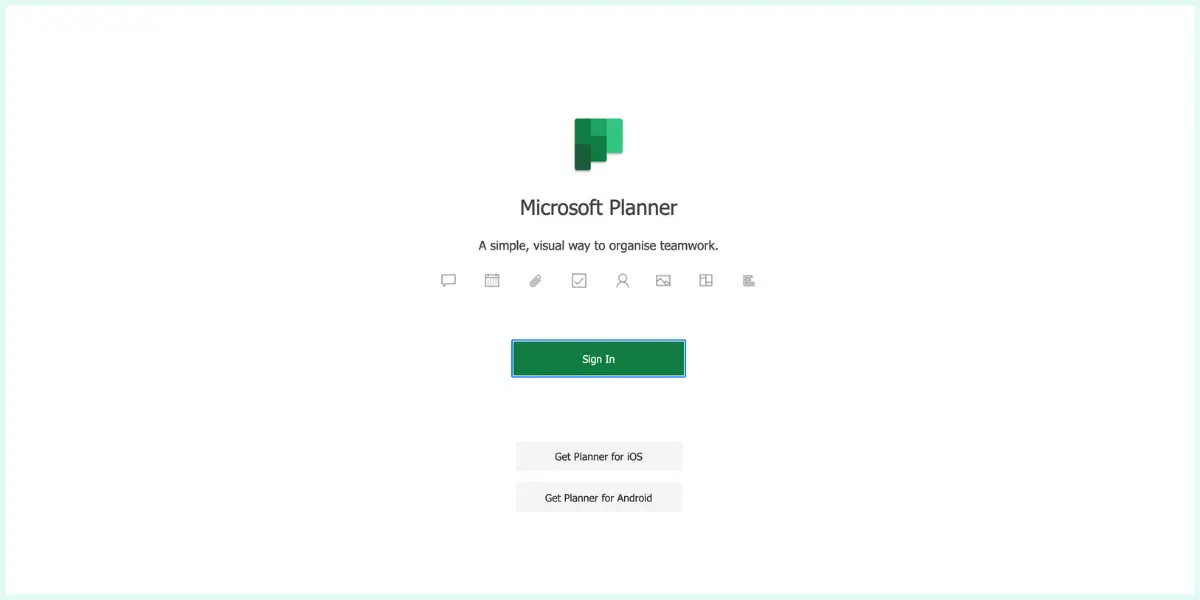
If you’re limited to the Microsoft world due to IT restrictions, I have great news. Microsoft Planner is a great task manager that was introduced for teams and individuals just like you!
It puts all the Microsoft 365 apps into one place, which allows teams to create plans, assign tasks to team members, and track progress more efficiently.
Features include to-do lists, templates, Kanban boards, task assignments, and integrations with Office products like Teams. Other integrations, including Salesforce, Hubspot, and Google Sheets, are also available.
Microsoft also launched a new version of Planner earlier this year. It includes an AI-powered tool called Microsoft Copilot, which allows you to use prompts to plan tasks, goals, and even entire projects.
Microsoft Planner is included in Microsoft 365. If you don’t have Microsoft 365, you can try Planner for free for one month. Prices range from $10 to $55 per user per month.
So, those are the best online task managers. Keep reading to find out how to choose one.
What to look for in an online task manager
With so many options available to you, what criteria should you use to find a good task manager that will truly help you become more productive? Here’s what to look for.
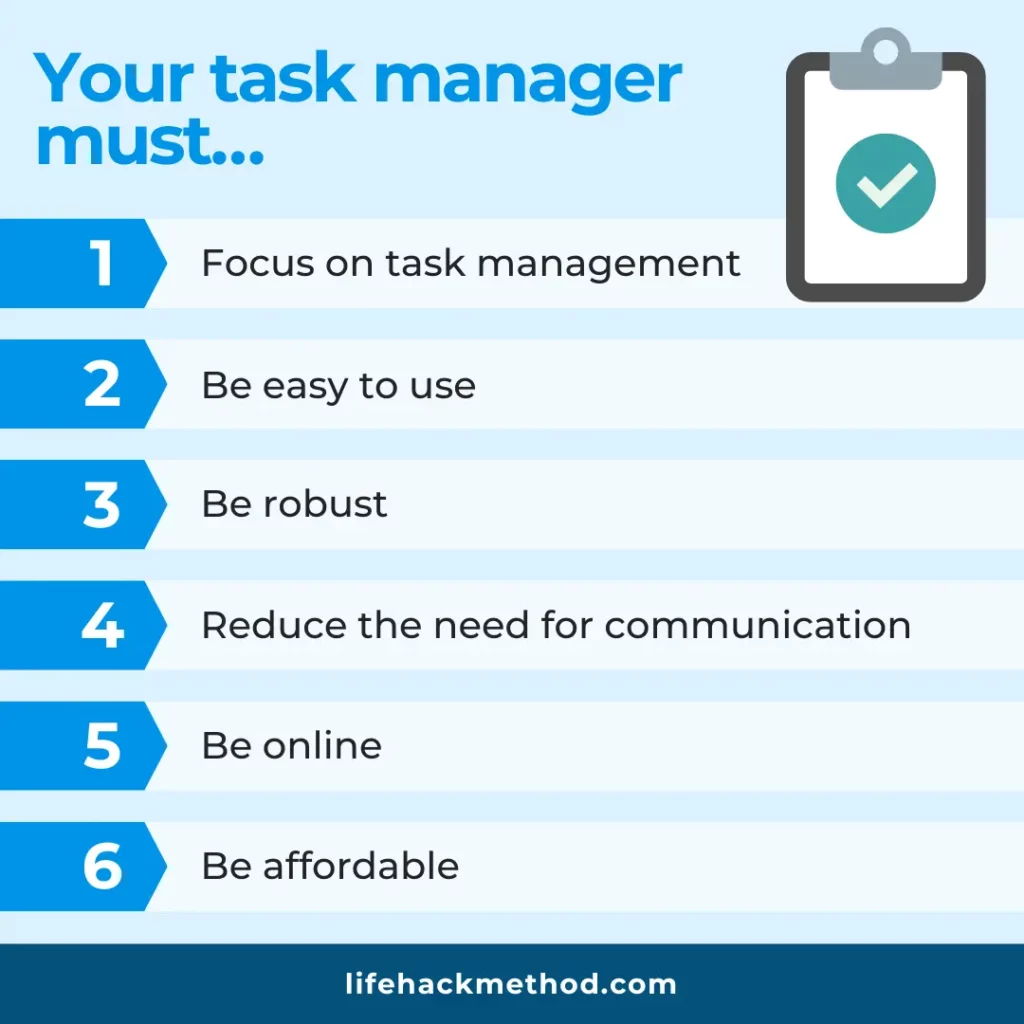
1. Task management must be its primary focus
First and foremost: whatever platform you choose must be able to store and prioritize tasks while collaborating with other people. It has to be a task manager that is good at managing tasks.
Platforms like Notion or Evernote won’t cut it, because it’s possible to have line-items that aren’t actually tasks. They’re meeting notes, reference materials or even full webpages… but no actions are required. (This is also why pen & paper and your email inbox don’t cut it!)
2. It has to be easy to use
Next, it has to be simple and easy to learn. There are many, many project management tools that are fantastic, but are very advanced and require a lot of training to use. Even for the average professional! It’s best to keep it simple so that it isn’t a huge headache to use.
3. It must be robust enough to grow with you.
It can’t be too simplistic.
What if your little side project becomes your full-time business, and then the business starts to grow and scale in a big way?
You should have a project management software that can take you all the way through that growth process without you having to switch platforms over and over again, and drag all of your information from one to the other.
4. It must reduce the need for communication
Next, it must reduce the amount of conversations your team is having and increase results.
Programs like Slack, email, and texting dramatically increase the amount of noise and chatter, without actually getting things done.
5. It must be online
Your project manager also needs to be online, stored in the cloud and accessible on any device. If it can only live on a desktop in your home—that’s not going to do you much good when you’re on the go!
You want to make sure that it has a robust mobile application to accompany the web application.
You also want it to work on both Mac and Windows, so any future team member or contractor can collaborate.
6. It must be affordable
And finally, it must be affordable, free, or at the very least come with a free trial.
Not many online task managers offer good free versions – and while many have a free trial period, it still means you’re signing up for a subscription after that trial period.
Why do you need an online task manager?
In today’s fast-paced world, it’s all too easy to get overwhelmed with the sheer amount of things we need to do.
But online task managers make that to-do list more manageable.
Trust me.
Demir and I have been using Asana for years to power our lives. We use it to do things like schedule doctors appointments for our daughter, plan birthday parties, and reply to emails. It even helps us figure out how to prioritize them!
It’s like magic.
All of a sudden, we can see everything we need to do in one place rather than having it scattered all over or stuck in our brains.
But it’s more than that.
Online task managers can help teams create zero-meeting, zero-email workflows.
When team members use online task managers, they can collaborate on projects remotely and will know exactly where everything is – no more forgetting deadlines or creating email chains trying to track an item down.
Plus, when you use online task managers effectively in work, you actually spend less time working overall.
With the right kind of delegation, you’ll be free to focus on higher-level tasks, which gives you hours back and reduces stress.
We’ve been doing it for years at Lifehack Method, and trust me, it’s a win-win.
What’s next?
There you have it! A full guide to the best free online task managers available.
No matter what platform you choose, it will only work if you commit to mastering it and using it.
But trust me, it’s worth it to get those valuable hours back.
That’s why I’ve launched a course that shows you exactly how to use Asana in the Lifehack Method way, with a focus on maximizing output, maximizing clarity, and making it as easy and simple to use as possible.
Click here to learn more about our Asana Training & Tutorial!
Read more:



